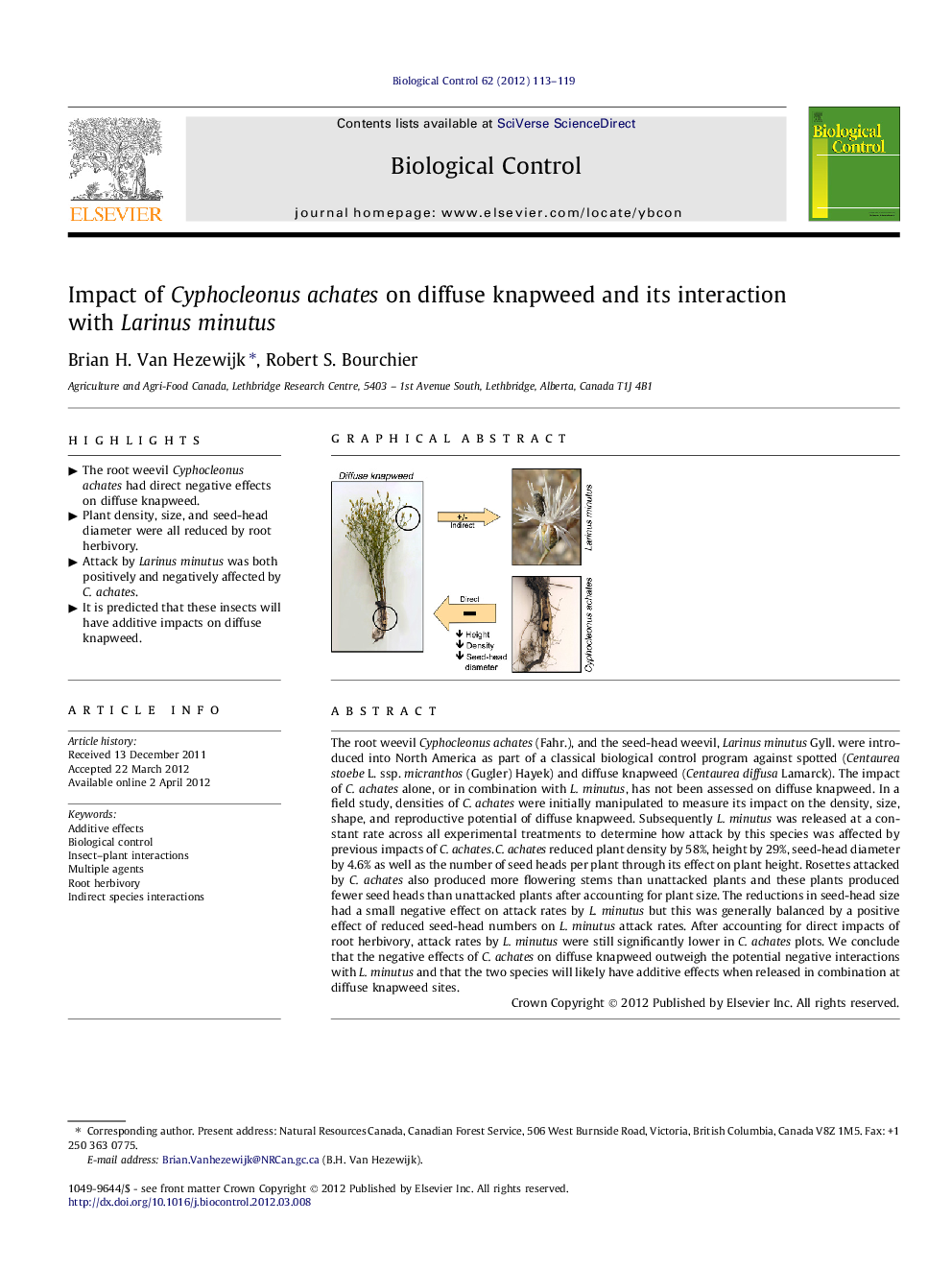| Article ID | Journal | Published Year | Pages | File Type |
|---|---|---|---|---|
| 4504105 | Biological Control | 2012 | 7 Pages |
The root weevil Cyphocleonus achates (Fahr.), and the seed-head weevil, Larinus minutus Gyll. were introduced into North America as part of a classical biological control program against spotted (Centaurea stoebe L. ssp. micranthos (Gugler) Hayek) and diffuse knapweed (Centaurea diffusa Lamarck). The impact of C. achates alone, or in combination with L. minutus, has not been assessed on diffuse knapweed. In a field study, densities of C. achates were initially manipulated to measure its impact on the density, size, shape, and reproductive potential of diffuse knapweed. Subsequently L. minutus was released at a constant rate across all experimental treatments to determine how attack by this species was affected by previous impacts of C. achates. C. achates reduced plant density by 58%, height by 29%, seed-head diameter by 4.6% as well as the number of seed heads per plant through its effect on plant height. Rosettes attacked by C. achates also produced more flowering stems than unattacked plants and these plants produced fewer seed heads than unattacked plants after accounting for plant size. The reductions in seed-head size had a small negative effect on attack rates by L. minutus but this was generally balanced by a positive effect of reduced seed-head numbers on L. minutus attack rates. After accounting for direct impacts of root herbivory, attack rates by L. minutus were still significantly lower in C. achates plots. We conclude that the negative effects of C. achates on diffuse knapweed outweigh the potential negative interactions with L. minutus and that the two species will likely have additive effects when released in combination at diffuse knapweed sites.
Graphical abstractFigure optionsDownload full-size imageDownload as PowerPoint slideHighlights► The root weevil Cyphocleonus achates had direct negative effects on diffuse knapweed. ► Plant density, size, and seed-head diameter were all reduced by root herbivory. ► Attack by Larinus minutus was both positively and negatively affected by C. achates. ► It is predicted that these insects will have additive impacts on diffuse knapweed.
